|
|
Alessandro Scarlatti (Composer) |
|
Born: May 2, 1660 Palermo, then part of the Kingdom of Sicily, Italy
Died: October 24, 1725 |
|
Alessandro Scarlatti was an Italian Baroque composer especially famous for his operas and chamber cantatas. He is considered the founder of the Neapolitan school of opera. He was the father of two other composers, Domenico Scarlatti and Pietro Filippo Scarlatti. |
|
Life |
|
Alessandro Scarlatti was born in Palermo, then part of the Kingdom of Sicily. He is generally said to have been a pupil of Giacomo Carissimi in Rome, and there is reason to suppose that he had some connection with northern Italy, since his early works show the influence of Stradella and Giovanni Legrenzi. The production at Rome of his opera Gli Equivoci nell sembiante (1679) gained him the protection of Queen Christina of Sweden (who at the time was living in Rome), and he became her maestro di cappella. In February 1684 he became maestro di cappella to the viceroy of Naples, through the influence of his sister, an opera singer, who was the mistress of an influential Neapolitan noble. Here he produced a long series of operas, remarkable chiefly for their fluency and expressiveness, as well as other music for state occasions.
In 1702 Alessandro Scarlatti left Naples and did not return until the Spanish domination had been superseded by that of the Austrians. In the interval he enjoyed the patronage of Ferdinando de' Medici, for whose private theatre near Florence he composed operas, and of Cardinal Ottoboni, who made him his maestro di cappella, and procured him a similar post at the Basilica di Santa Maria Maggiore in Rome in 1703.
After visiting Venice and Urbino in 1707, Alessandro Scarlatti took up his duties in Naples again in 1708, and remained there until 1717. By this time Naples seems to have become tired of his music; the Romans, however, appreciated it better, and it was at the Teatro Capranica in Rome that he produced some of his finest operas (Telemaco, 1718; Marco Attilio Regolò, 1719; La Griselda, 1721), as well as some noble specimens of church music, including a mass for chorus and orchestra, composed in honor of Saint Cecilia for Cardinal Acquaviva in 1721. His last work on a large scale appears to have been the unfinished serenata for the marriage of the prince of Stigliano in 1723. Scarlatti died in Naples. |
|
Scarlatti's Music |
|
Alessandro Scarlatti's music forms an important link between the early Baroque Italian vocal styles of the 17th century, with their centers in Florence, Venice and Rome, and the classical school of the 18th century, which culminated in Mozart. His early operas (Gli equivoci nel sembiante, 1679; Líhonestà negli amori, 1680, containing the famous aria "Già il sole dal Gange"; Il Pompeo, 1683, containing the well-known arias "O cessate di piagarmi" and "Toglietemi la vita ancor," and others down to about 1685) retain the older cadences in their recitatives, and a considerable variety of neatly constructed forms in their charming little arias, accompanied sometimes by the string quartet, treated with careful elaboration, sometimes with the continuo alone. By 1686 he had definitely established the "Italian overture" form (second edition of Dal male il bene), and had abandoned the ground bass and the binary form air in two stanzas in favour of the ternary form or da capo type of air. His best operas of this period are La Rosaura (1690, printed by the Gesellschaft für Musikforschung), and Pirro e Demetrio (1694), in which occur the arias "Rugiadose, odorose", and "Ben ti sta, traditor".
From about 1697 onwards (La caduta del Decemviri), influenced partly perhaps by the style of Giovanni Bononcini and probably more by the taste of the viceregal court, his opera arias become more conventional and commonplace in rhythm, while his scoring is hasty and crude, yet not without brilliance (L'Eraclea, 1700), the oboes and trumpets being frequently used, and the violins often playing in unison. The operas composed for Ferdinando de' Medici are lost; they might have given a more favourable idea of his style as his correspondence with the prince shows that they were composed with a very sincere sense of inspiration.
Mitridate Eupatore, accounted his masterpiece, composed for Venice in 1707, contains music far in advance of anything that Scarlatti had written for Naples, both in technique and in intellectual power. The later Neapolitan operas (L'amor volubile e tiranno, 1709; La principessa fedele, 1710; Tigrane, 1714, &c.) are showy and effective rather than profoundly emotional; the instrumentation marks a great advance on previous work, since the main duty of accompanying the voice is thrown upon the string quartet, the harpsichord being reserved exclusively for the noisy instrumental ritornelli. In his opera Teodora (1697) he originated the use of the orchestral ritornello.
His last group of operas, composed for Rome, exhibit a deeper poetic feeling, a broad and dignified style of melody, a strong dramatic sense, especially in accompanied recitatives, a device which he himself had been the first to use as early as 1686 (Olimpia vendicata) and a much more modern style of orchestration, the horns appearing for the first time, and being treated with striking effect.
Besides the operas, oratorios (Agar et Ismaele esiliati, 1684; Christmas Oratorio, c1705; S. Filippo Neri, 1714; and others) and serenatas, which all exhibit a similar style, Alessandro Scarlatti composed upwards of five hundred chamber-cantatas for solo voice. These represent the most intellectual type of chamber-music of their period, and it is to be regretted that they have remained almost entirely in manuscript, since a careful study of them is indispensable to anyone who wishes to form an adequate idea of Scarlatti's development.
His few remaining masses (the story of his having composed two hundred is hardly credible) and church music in general are comparatively unimportant, except the great St Cecilia Mass (1721), which is one of the first attempts at the style which reached its height in the great masses of J.S. Bach and L.v. Beethoven. His instrumental music, though not without interest, is curiously antiquated as compared with his vocal works. |
|
J.S. Bach Connection |
|
It has been suggested that J.S. Bach was aware of the arias for solo soprano, trumpet and continuo by Alessandro Scarlatti and that these works influenced BWV 51.
Steven Langley Guy wrote on September 25, 2001 in the discussion: Trumpets in Bachís Vocal Works - Part 1
Vocal and instrumental pieces by a great variety composers must have been included in the weekly series of "ordinary" concerts by the Collegium Musicum, but it is impossible to reconstruct, even in the broadest outlines, any of the more than five hundred two-hour programs for which J.S. Bach was responsible. Pertinent performing materials from the 1730's are extremely sparse; among the traceable compositions are four orchestral overtures by Johann Bernhard Bach; the cantata Armida abbandonata by Georg Frideric Handel; the Concerto Grosso in F minor, Op. 1, No. 8, by Pietro Locatelli; three Italian cantatas (Dal primo foco in cui penai, Sopra un colle fiorito, and Ecco l'infausto lido) by Nicola Porpora; and the cantata Se amor con un contento by Alessandro Scarlatti. (Glöckner 1990, pp 89f.) Additionally, "Mr. Bach de Leipzig" is found among the subscribers to Georg Philipp Telemann's Nouveaux Quatuors (flute quartets), published in Paris in 1738, which suggests that he wanted the pieces for the Collegium series. Although these few works and composers cannot be considered representative at all, they confirm that the repertoire was both instrumental and vocal, that Italian solo cantatas played a role, and that the newest kind of music (such as the N. Porpora cantatas and the G.P. Telemann quartets) was introduced.
Christoph Wolff: Johann Sebastian Bach The Learned Musician (W.W. Norton & Company, 2000), pp. 333, 501 |
|
Operas |
|
(Work, librettist, place and date of first performance)
Gli equivoci nel sembiante (Domenico Filippo Contini; Rome 1679)
Tutto il mal non vien per nuocere (D. G. de Totis; Rome 1681, revised as Dal male il bene Naples 1687)
Il Pompeo (Nicolò Minato; Rome 1683)
Olimpia vendicata (Aurelio Aureli; Naples 1685)
Clearco in Negroponte (Antonio Arcoleo; Naples 1686)
La Statira (Pietro Ottoboni; Rome 1690)
La Rosaura (Giovanni Battista Lucini; Rome 1690)
La Teodora Augusta (Adriano Morselli; Naples 1692)
Pirro e Demetrio (Adriano Morselli; Naples 1694)
La caduta de' Decemviri (Silvio Stampiglia; Naples 1697)
La donna ancora è fedele (Domenico Filippo Contini; Naples 1698)
Il prigioniero fortunato (F. M. Paglia; Naples 1698)
L'Eraclea (Silvio Stampiglia; Naples 1700)
Arminio (Antonio Salvi; Pratolino 1703)
Mitridate Eupatore (Girolamo Roberti Frigimelica; Venice 1707)
Il trionfo della libertà (Girolamo Roberti Frigimelica; Venice 1707)
L'amor volubile e tiranno (Giovan Domenico Pioli and Giuseppe Papis; Naples 1709)
La principessa fedele (Agostino Piovene; Naples 1710)
Scipione nelle Spagne (Apostolo Zeno; Naples 1714)
Tigrane (Domenico Lalli; Naples 1715)
Carlo re d'Allemagna (Francesco Silvani; Naples 1716)
Telemaco (Carlo Sigismondo Capeci; Rome 1718)
Il trionfo dell'onore (Francesco Antonio Tullio; Naples 1718)
Cambise (Domenico Lalli; Naples 1719)
Marco Attilio Regolo (Matteo Noris; Rome 1719)
Griselda (Apostolo Zeno, revised by F. M. Ruspoli; Rome 1721) |
|

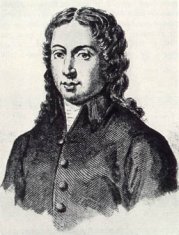
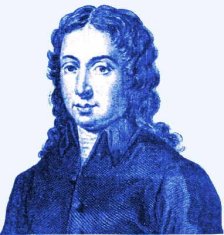


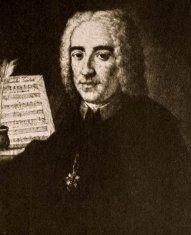
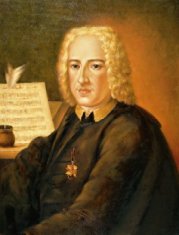


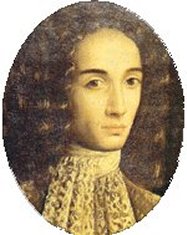
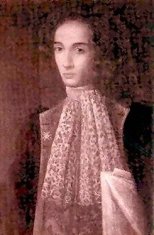


|
|
Source: Mostly Wikipedia Website
Contributed by Aryeh Oron (October 2008) |
|
Works arranged/copied/performed by J.S. Bach |
|
Between 1730-1737, J.S. performed with his Collegium Musicum in Leipzig A. Scarlatti's Secular Cantata So amor con un contento
Source: Gerlach Collegium Musicum Library to Breitkopf; Christoph Wolff: Johann Sebastian Bach The Learned Musician (W.W. Norton & Company, 2000), p. 333, 501 |
|
Links to other Sites |
|
Alessandro Scarlatti (Wikipedia)
Alessandro Scarlatti (Classical Music Pages)
Alessandro Scarlatti: life and work (Baroque Music)
Alessandro Scarlatti (Karadar)
The Scarlatti Project - Bringing the Music to Life
Alessandro Scarlatti - Biography, Discography (Goldberg) |
Alessandro Scarlatti (Sojurn)
HOASM: Alessandro Scarlatti
Alessandro Scarlatti (Britannica Online Encyclopedia)
Alessandro Scarlatti (Catholic Encyclopedia)
Alessandro Scarlatti (Free Encyclopedia)
Alessandro Scarlatti Biography (Naxos) |
|
Bibliography |
| |
|
|